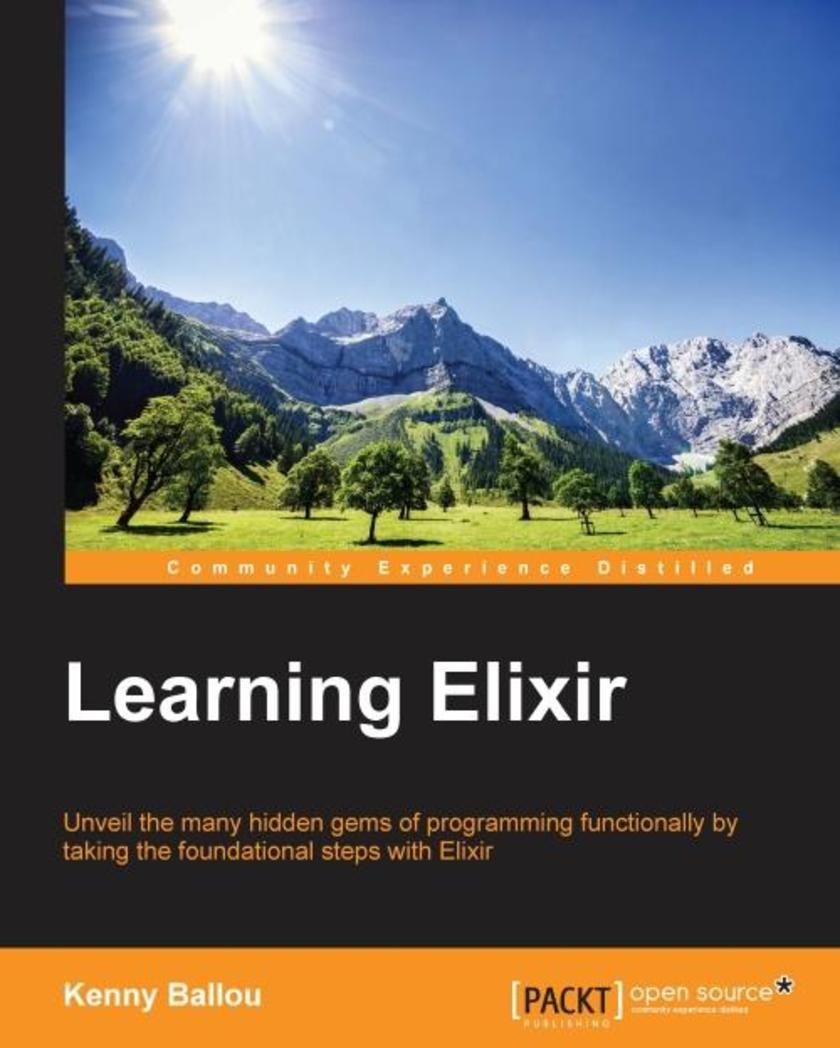
Learning Elixir
¥63.21
Unveil many hidden gems of programming functionally by taking the foundational steps with ElixirAbout This BookExplore the functional paradigms of programming with Elixir through use of helpful examplesConcise step-by-step instructions to teach you difficult technical conceptsBridge the gap between functional programming and ElixirWho This Book Is ForThis book targets developers new to Elixir, as well as Erlang, in order to make them feel comfortable in functional programming with Elixir, thus enabling them to develop more scalable and fault-tolerant applications.Although no knowledge of Elixir is assumed, some programming experience with mainstream Object-Oriented programming languages such a Ruby, Python, Java, C# would be beneficial.What You Will LearnExplore Elixir to create resilient, scalable applicationsCreate fault-tolerant applicationsBecome better acquainted with Elixir code and see how it is structured to build and develop functional programsLearn the basics of functional programmingGain an understanding of effective OTP principlesDesign program-distributed applications and systemsWrite and create branching statements in ElixirLearn to do more with less using Elixir's metaprogrammingBe familiar with the facilities Elixir provides for metaprogramming, macros, and extending the Elixir languageIn DetailElixir, based on Erlang’s virtual machine and ecosystem, makes it easier to achieve scalability, concurrency, fault tolerance, and high availability goals that are pursued by developers using any programming language or programming paradigm. Elixir is a modern programming language that utilizes the benefits offered by Erlang VM without really incorporating the complex syntaxes of Erlang.Learning to program using Elixir will teach many things that are very beneficial to programming as a craft, even if at the end of the day, the programmer isn't using Elixir. This book will teach you concepts and principles important to any complex, scalable, and resilient application. Mostly, applications are historically difficult to reason about, but using the concepts in this book, they will become easy and enjoyable. It will teach you the functional programing ropes, to enable them to create better and more scalable applications, and you will explore how Elixir can help you achieve new programming heights. You will also glean a firm understanding of basics of OTP and the available generic, provided functionality for creating resilient complex systems. Furthermore, you will learn the basics of metaprogramming: modifying and extending Elixir to suite your needs.Style and approach An exploration of functional programming and Elixir with easy to follow examples using Elixir and the functional style. All the topics, concepts, and principles covered are clearly and concisely explained with either code examples or in depth discussions, or both!
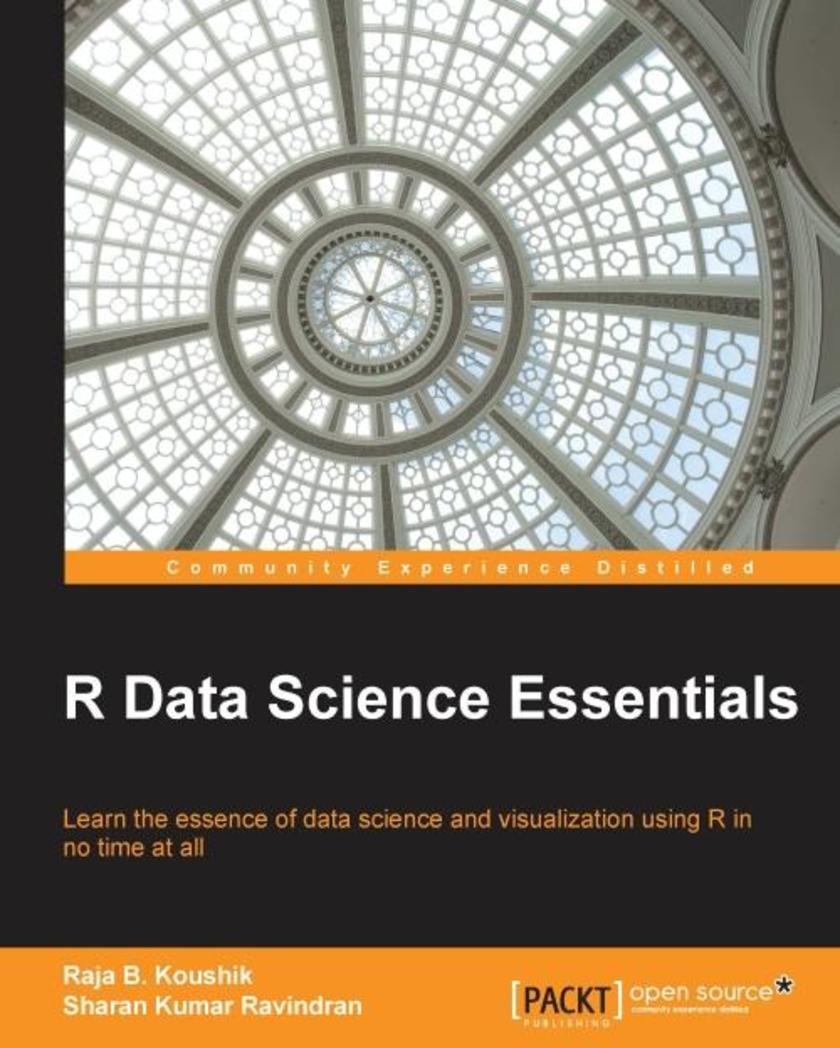
R Data Science Essentials
¥63.21
Learn the essence of data science and visualization using R in no time at allAbout This BookBecome a pro at making stunning visualizations and dashboards quickly and without hassleFor better decision making in business, apply the R programming language with the help of useful statistical techniques.From seasoned authors comes a book that offers you a plethora of fast-paced techniques to detect and analyze data patternsWho This Book Is ForIf you are an aspiring data scientist or analyst who has a basic understanding of data science and has basic hands-on experience in R or any other analytics tool, then R Data Science Essentials is the book for you.What You Will LearnPerform data preprocessing and basic operations on dataImplement visual and non-visual implementation data exploration techniquesMine patterns from data using affinity and sequential analysisUse different clustering algorithms and visualize themImplement logistic and linear regression and find out how to evaluate and improve the performance of an algorithmExtract patterns through visualization and build a forecasting algorithmBuild a recommendation engine using different collaborative filtering algorithmsMake a stunning visualization and dashboard using ggplot and R shinyIn DetailWith organizations increasingly embedding data science across their enterprise and with management becoming more data-driven it is an urgent requirement for analysts and managers to understand the key concept of data science. The data science concepts discussed in this book will help you make key decisions and solve the complex problems you will inevitably face in this new world.R Data Science Essentials will introduce you to various important concepts in the field of data science using R. We start by reading data from multiple sources, then move on to processing the data, extracting hidden patterns, building predictive and forecasting models, building a recommendation engine, and communicating to the user through stunning visualizations and dashboards.By the end of this book, you will have an understanding of some very important techniques in data science, be able to implement them using R, understand and interpret the outcomes, and know how they helps businesses make a decision.Style and approachThis easy-to-follow guide contains hands-on examples of the concepts of data science using R.
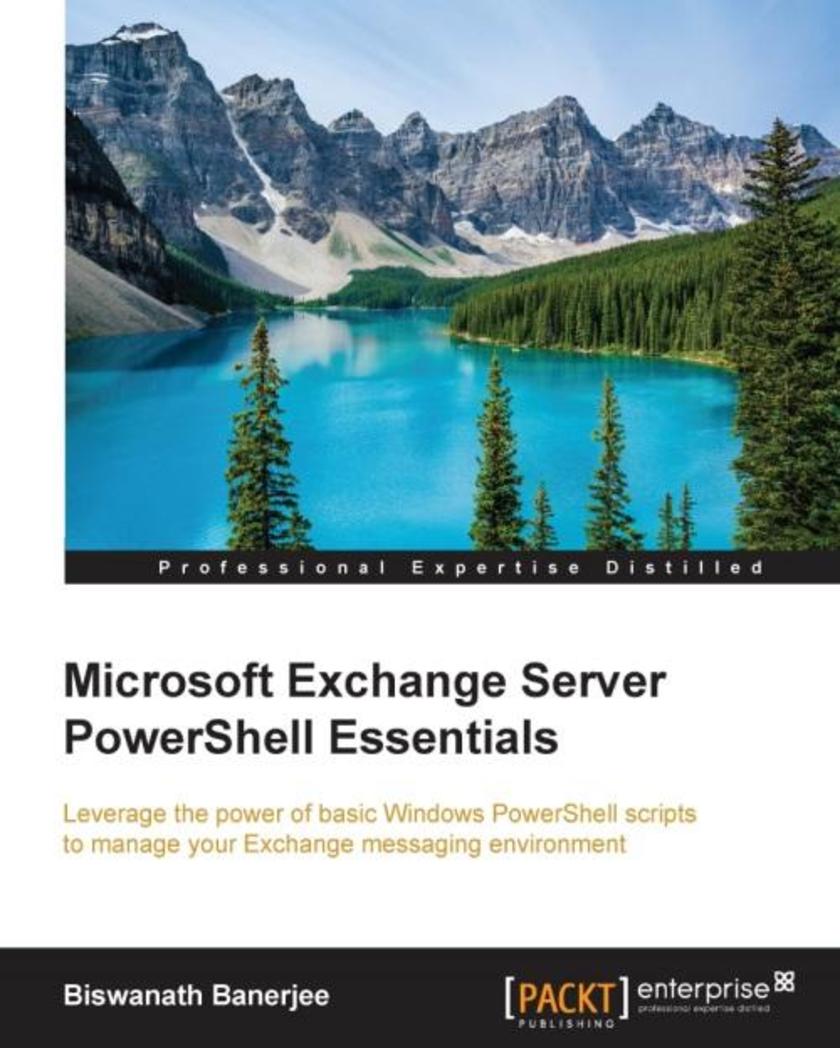
Microsoft Exchange Server PowerShell Essentials
¥63.21
Leverage the power of basic Windows PowerShell *s to manage your Exchange messaging environmentAbout This BookGet to grips with Windows PowerShell and how it can be used to manage various aspects of the operating system and applicationsBecome proficient in PowerShell and apply it to manage Exchange infrastructure on-premise or via Exchange Online as part of Office 365Learn to create Windows PowerShell *s to do administrative tasks with this step-by-step, easy-to-follow guideWho This Book Is ForThis book is for administrators with a basic or limited understanding of Windows PowerShell and who want to increase their skill set in managing both the Exchange On Premise and Online environments.What You Will LearnDeep dive into the Windows PowerShell basicsCreate and manage Recipients and permissionsManage Distribution Group members, permissions, and group typesUnderstand Certificates and Role-Based Access Control using real-world examplesReview the usage of email address, address book, and retention policies with examplesLearn to manage Exchange Client Access and Mailbox Server rolesUse PowerShell for auditing and risk management in your Exchange organizationManage a highly available Exchange environment using PowerShellInteract with Exchange through the use of the Exchange Web Services-managed APIIn DetailPowerShell has become one of the most important skills in an Exchange administrator's armory. PowerShell has proved its mettle so widely that, if you're not already starting to learn PowerShell, then you're falling behind the industry. It isn't difficult to learn PowerShell at all. In fact, if you've ever run commands from a CMD prompt, then you'll be able to start using PowerShell straightaway.This book will walk you through the essentials of PowerShell in Microsoft Exchange Server and make sure you understand its nitty gritty effectively.You will first walk through the core concepts of PowerShell and their applications. This book discusses ways to automate tasks and activities that are performed by Exchange administrators and that otherwise take a lot of manual effort.Microsoft Exchange PowerShell Essentials will provide all the required details for Active Directory, System, and Exchange administrators to help them understand Windows PowerShell and build the required *s to manage the Exchange Infrastructure.Style and approachThis book is written with its target audience in mind; concepts are explained and followed by real-life examples. A comprehensive * is provided in each chapter to give you hands-on practice with all the major commands used in it.
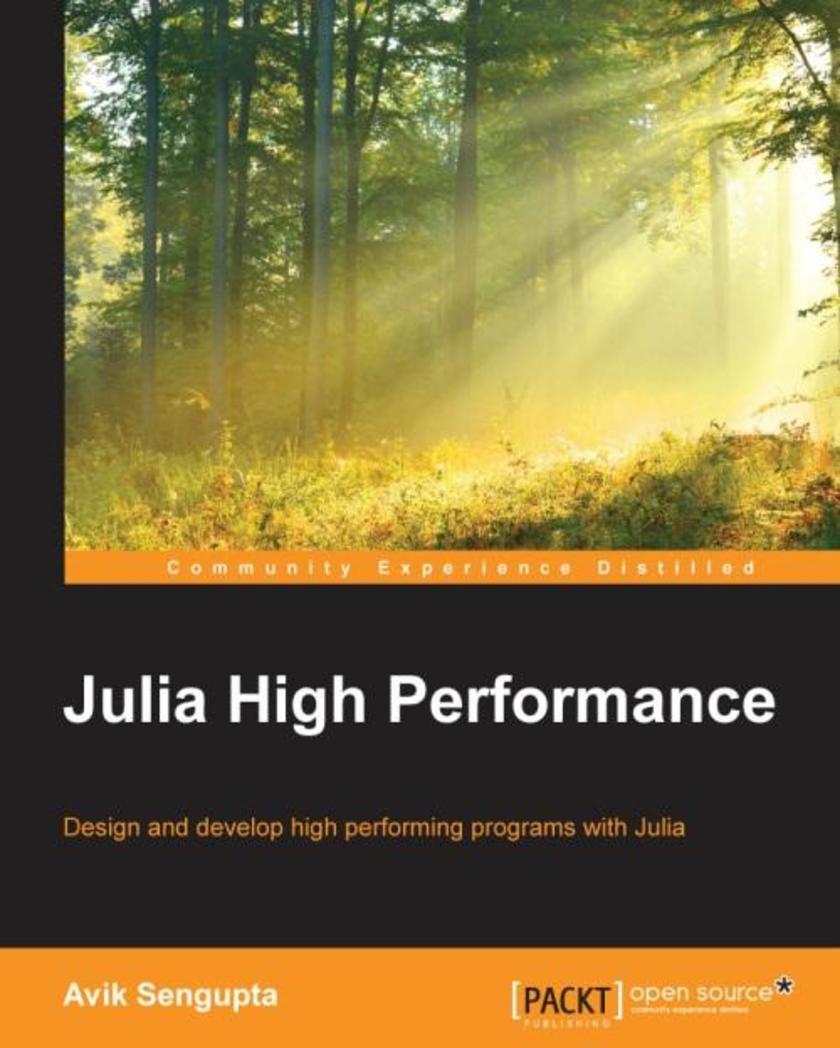
Julia High Performance
¥63.21
Design and develop high performing programs with Julia About This Book Learn to code high reliability and high performance programs Stand out from the crowd by developing code that runs faster than your peers’ codes This book is intended for developers who are interested in high performance technical programming. Who This Book Is For This book is for beginner and intermediate Julia programmers who are interested in high performance technical computing. You will have a basic familiarity with Julia syntax, and have written some small programs in the language. What You Will Learn Discover the secrets behind Julia’s speed Get a sense of the possibilities and limitations of Julia’s performance Analyze the performance of Julia programs Measure the time and memory taken by Julia programs Create fast machine code using Julia’s type information Define and call functions without compromising Julia’s performance Understand number types in Julia Use Julia arrays to write high performance code Get an overview of Julia’s distributed computing capabilities In Detail Julia is a high performance, high-level dynamic language designed to address the requirements of high-level numerical and scientific computing. Julia brings solutions to the complexities faced by developers while developing elegant and high performing code. Julia High Performance will take you on a journey to understand the performance characteristics of your Julia programs, and enables you to utilize the promise of near C levels of performance in Julia. You will learn to analyze and measure the performance of Julia code, understand how to avoid bottlenecks, and design your program for the highest possible performance. In this book, you will also see how Julia uses type information to achieve its performance goals, and how to use multuple dispatch to help the compiler to emit high performance machine code. Numbers and their arrays are obviously the key structures in scientific computing – you will see how Julia’s design makes them fast. The last chapter will give you a taste of Julia’s distributed computing capabilities. Style and approach This is a hands-on manual that will give you good explanations about the important concepts related to Julia programming.
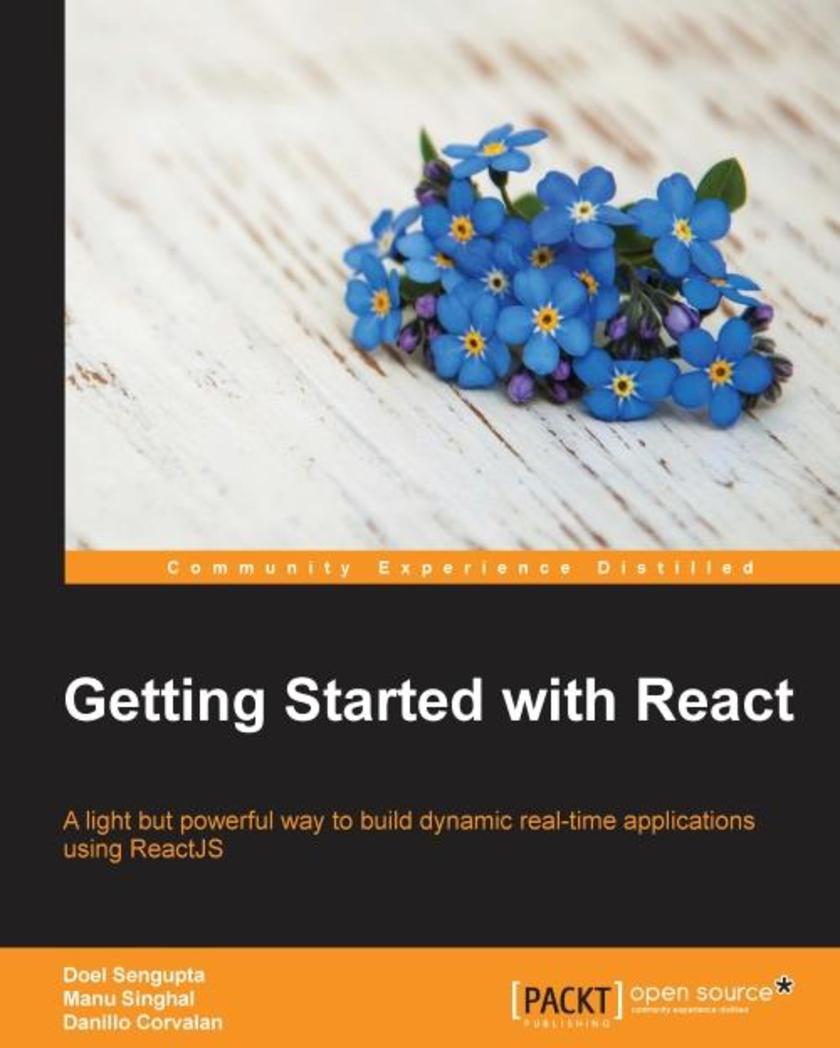
Getting Started with React
¥63.21
A light but powerful way to build dynamic real-time applications using ReactJS About This Book Learn how to develop powerful JavaScript applications using ReactJS Integrate a React-based app with an external API (Facebook login) while using React components, with the Facebook developer app Implement the Reactive paradigm to build stateless and asynchronous apps with React Who This Book Is For This book is for any front-end web or mobile-app developer who wants to learn ReactJS. Knowledge of basic JavaScript will give you a good head start with the book. What You Will Learn Understand the ReactJS basics through an overview Install and create your first React component Refactor the ReactJS component using JSX Integrate your React application with the Facebook login and Graph API, then fetch data from your liked pages in Facebook and display them in a browser Handle UI elements events with React, respond to users input, and create stateful components Use some core lifecycle events for integration and find out about ES6 syntaxes in the React world Understand the FLUX architecture and create an application using FLUX with React Make a component more reusable with mixins and validation helpers and structure your components properly Explore techniques to test your ReactJS code Deploy your code using webpack and Gulp In Detail ReactJS, popularly known as the V (view) of the MVC architecture, was developed by the Facebook and Instagram developers. It follows a unidirectional data flow, virtual DOM, and DOM difference that are generously leveraged in order to increase the performance of the UI. Getting Started with React will help you implement the Reactive paradigm to build stateless and asynchronous apps with React. We will begin with an overview of ReactJS and its evolution over the years, followed by building a simple React component. We will then build the same react component with JSX syntax to demystify its usage. You will see how to configure the Facebook Graph API, get your likes list, and render it using React. Following this, we will break the UI into components and you’ll learn how to establish communication between them and respond to users input/events in order to have the UI reflect their state. You’ll also get to grips with the ES6 syntaxes. Moving ahead, we will delve into the FLUX and its architecture, which is used to build client-side web applications and complements React’s composable view components by utilizing a unidirectional data flow. Towards the end, you’ll find out how to make your components reusable, and test and deploy them into a production environment. Finally, we’ll briefly touch on other topics such as React on the server side, Redux and some advanced concepts. Style and approach The book follows a step-by-step, practical, tutorial approach with examples that explain the key concepts of ReactJS. Each topic is sequentially explained and contextually placed to give sufficient details of ReactJS.
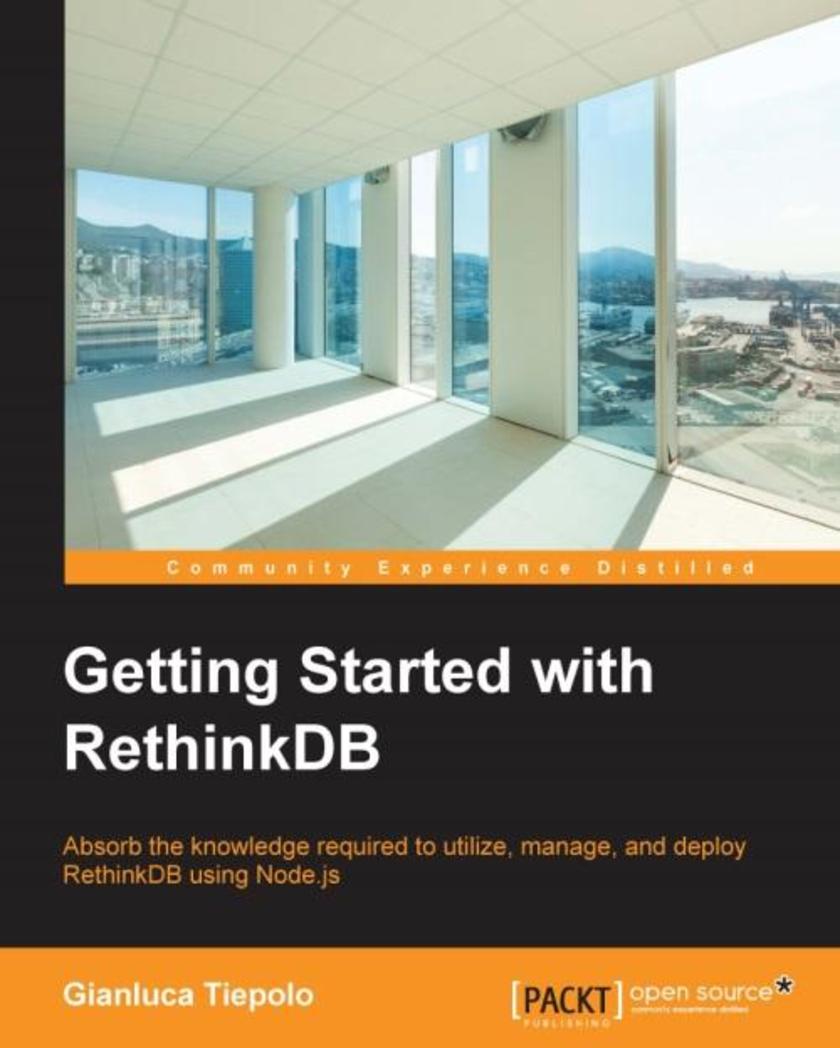
Getting Started with RethinkDB
¥63.21
Absorb the knowledge required to utilize, manage, and deploy RethinkDB using Node.js About This Book Make the most of this open source, scalable database—RethinkDB —to ease the construction of web applications Run powerful queries using ReQL, which is the most convenient language to manipulate JSON documents with Develop fully-fledged real-time web apps using Node.js and RethinkDB Who This Book Is For Getting Started with RethinkDB is ideal for developers who are new to RethinkDB and need a practical understanding to start working with it. No previous knowledge of database programming is required, although a basic knowledge of JavaScript or Node.js would be helpful. What You Will Learn Download and install the database on your system Configure RethinkDB’s settings and start using the web interface Import data into RethinkDB Run queries using the ReQL language Create shards, replicas, and RethinkDB clusters Use an index to improve database performance Get to know all the RethinkDB deployment techniques In Detail RethinkDB is a high-performance document-oriented database with a unique set of features. This increasingly popular NoSQL database is used to develop real-time web applications and, together with Node.js, it can be used to easily deploy them to the cloud with very little difficulty. Getting Started with RethinkDB is designed to get you working with RethinkDB as quickly as possible. Starting with the installation and configuration process, you will learn how to start importing data into the database and run simple queries using the intuitive ReQL query language. After successfully running a few simple queries, you will be introduced to other topics such as clustering and sharding. You will get to know how to set up a cluster of RethinkDB nodes and spread database load across multiple machines. We will then move on to advanced queries and optimization techniques. You will discover how to work with RethinkDB from a Node.js environment and find out all about deployment techniques. Finally, we’ll finish by working on a fully-fledged example that uses the Node.js framework and advanced features such as Changefeeds to develop a real-time web application. Style and approach This is a step-by-step book that provides a practical approach to RethinkDB programming, and is explained in a conversational, easy-to-follow style.
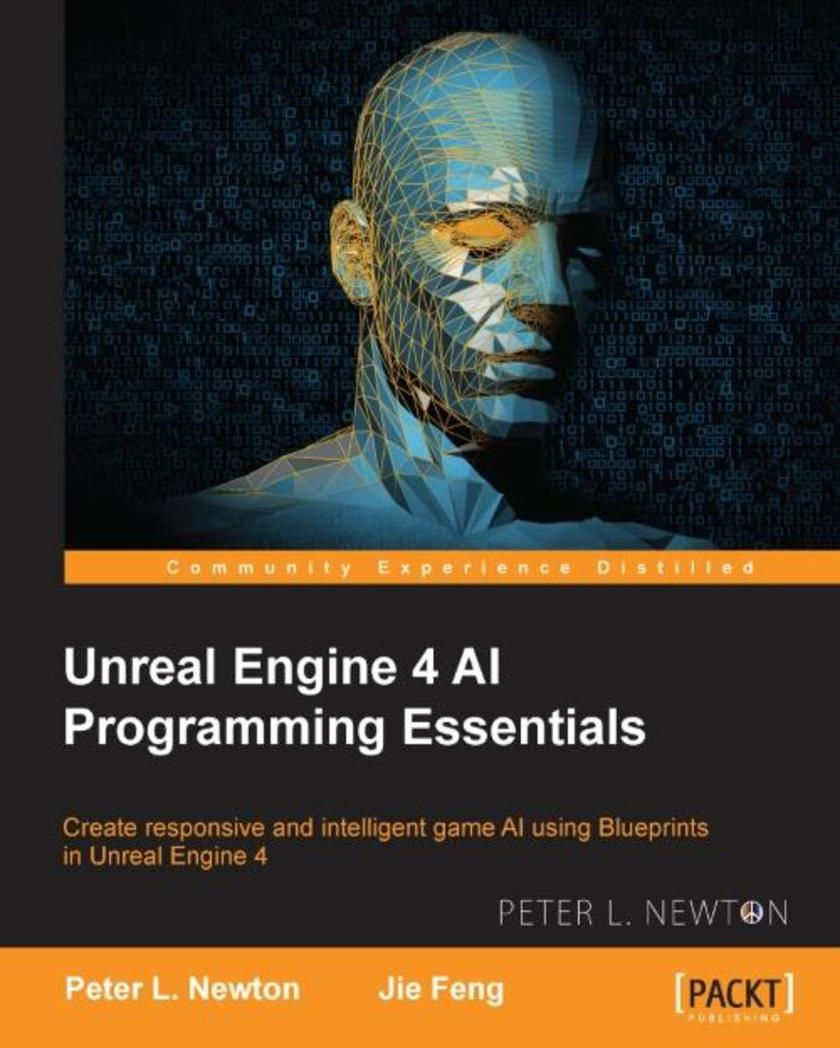
Unreal Engine 4 AI Programming Essentials
¥63.21
Create responsive and intelligent game AI using Blueprints in Unreal Engine 4 About This Book Understand and apply your Game AI better through various projects such as adding randomness and probability, and introducing movement Configure and debug Game AI logic using multiple methodologies Bridge the gap between your knowledge and Game AI in Unreal Engine 4 Who This Book Is For This book is for programmers and artists who want to expand their knowledge of Game AI in relation to Unreal Engine 4. You are recommended to have some experience of exploring Unreal Engine 4 prior to this book because we jump straight into Game AI. What You Will Learn Understand the fundamental components of Game AI within Unreal Engine 4 Skillfully introduce Game AI within Unreal Engine 4 Configure, customize, and assign Navigation and AI components to your pawn Create, debug, and analyze Game AI behavior Design responsive Game AI using the Behavior Tree methodology Create smart objects designed to interact with AI Utilize advanced AI features within your project to maximize the user experience In Detail Unreal Engine is a powerful game development engine that provides rich functionalities to create 2D and 3D games. It is one of the three big game engines used, alongside Unity and CryEngine. Developers have the opportunity to build cross-platform mobile and desktop games from scratch. With Blueprints in Unreal Engine 4, you’re able to fully leverage the visual aid that Behavior Trees are built on. Rarely has there been an opportunity to prototype powerful Game AI and have immediate control over constructing, *ing, and viewing the response in a live gaming environment. This book will show you how to apply artificial intelligence (AI) techniques to your Unreal Script using C++ as your *ing language through multiple projects. With the knowledge gained through this book, you’ll be able to leverage the benefits of Unreal Engine 4. We’ll start with an introduction to AI, and you’ll learn how it is applied to gaming. Then you’ll jump right in and create a simple AI bot and apply basic behaviors to allow it to move randomly. Furthermore, you will get to know the difference between an AI Controller and a Player Controller. As you progress, you’ll find out how to implement randomness and probability traits. Using Navmesh, we will impart navigation components such as Character Movement, MoveTo Nodes, Settings, and World Objects, and implement behavior trees. You will see different techniques to sense the environment and create your own sensory system, and will implement Steering Behaviors, Path Following, Avoidance, and Projectiles. At the end of the book, we will troubleshoot any issues that might crop up while building the entire game. Style and approach This easy-to-follow project-based guide throws you directly into the excitement of Game AI in an approachable and comprehensive manner.
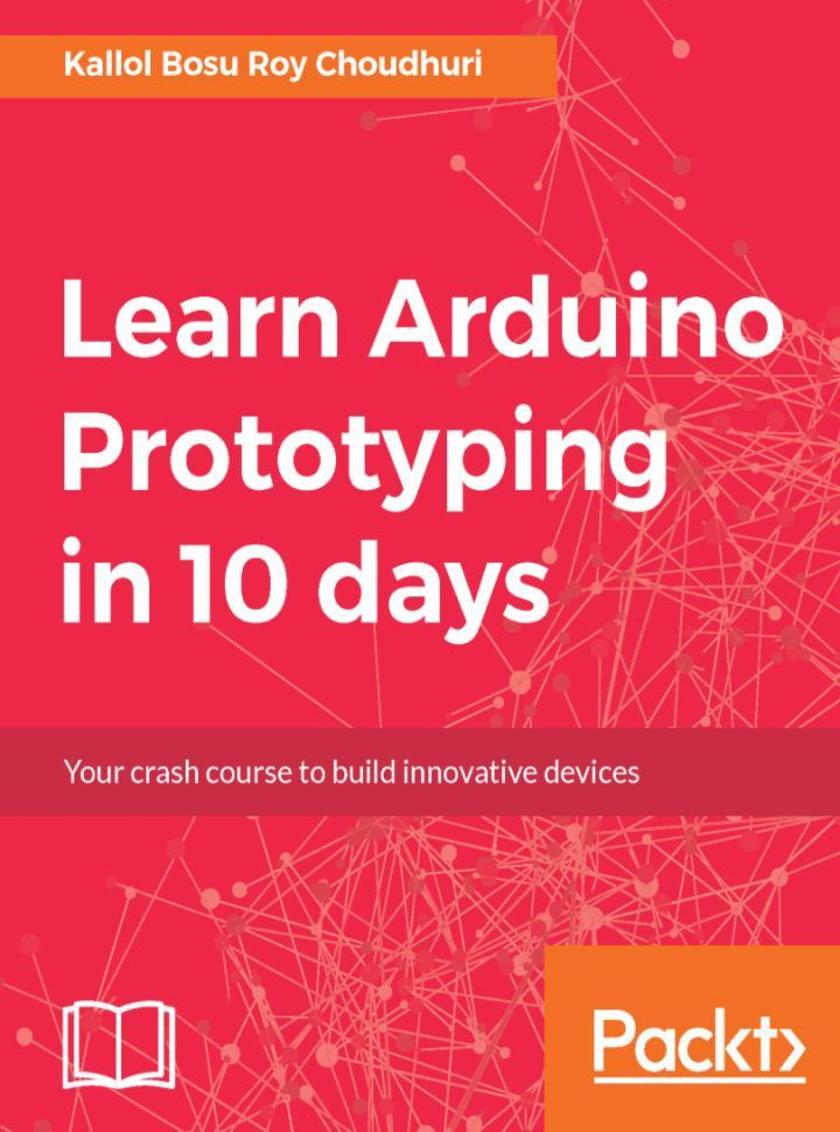
Learn Arduino Prototyping in 10 days
¥63.21
The ultimate power-packed crash course in building Arduino-based projects in just 10 days! About This Book ? A carefully designed 10-day crash course, covering major project/device types, with 20+ unique hands-on examples ? Get easy-to-understand explanations of basic electronics fundamentals and commonly used C sketch functions ? This step-by-step guide with 90+ diagrams and 50+ important tips will help you become completely self-reliant and confident Who This Book Is For This book is a beginner’s crash course for professionals, hobbyists, and students who are tech savvy, have a basic level of C programming knowledge, and basic familiarity with electronics, be it for embedded systems or the Internet of Things. What You Will Learn ? Write Arduino sketches and understand the fundamentals of building prototype circuits using basic electronic components, such as resistors, transistors, and diodes ? Build simple, compound, and standalone devices with auxiliary storage (SD card), a DC battery, and AC power supplies ? Deal with basic sensors and interface sensor modules by using sensor datasheets ? Discover the fundamental techniques of prototyping with actuators ? Build remote-controlled devices with infrared (IR), radio frequency (RF), and telephony with GSM ? Learn IoT edge device prototyping (using ESP8266) and IoT cloud configuration In Detail This book is a quick, 10-day crash course that will help you become well acquainted with the Arduino platform. The primary focus is to empower you to use the Arduino platform by applying basic fundamental principles. You will be able to apply these principles to build almost any type of physical device. The projects you will work through in this book are self-contained micro-controller projects, interfacing with single peripheral devices (such as sensors), building compound devices (multiple devices in a single setup), prototyping standalone devices (powered from independent power sources), working with actuators (such as DC motors), interfacing with an AC-powered device, wireless devices (with Infrared, Radio Frequency and GSM techniques), and finally implementing the Internet of Things (using the ESP8266 series Wi-Fi chip with an IoT cloud platform). The first half of the book focuses on fundamental techniques and building basic types of device, and the final few chapters will show you how to prototype wireless devices. By the end of this book, you will have become acquainted with the fundamental principles in a pragmatic and scientific manner. You will also be confident enough to take up new device prototyping challenges. Style and approach This step-by- step guide will serve as a quick, 10-day crash course to help you become well acquainted with the Arduino platform.
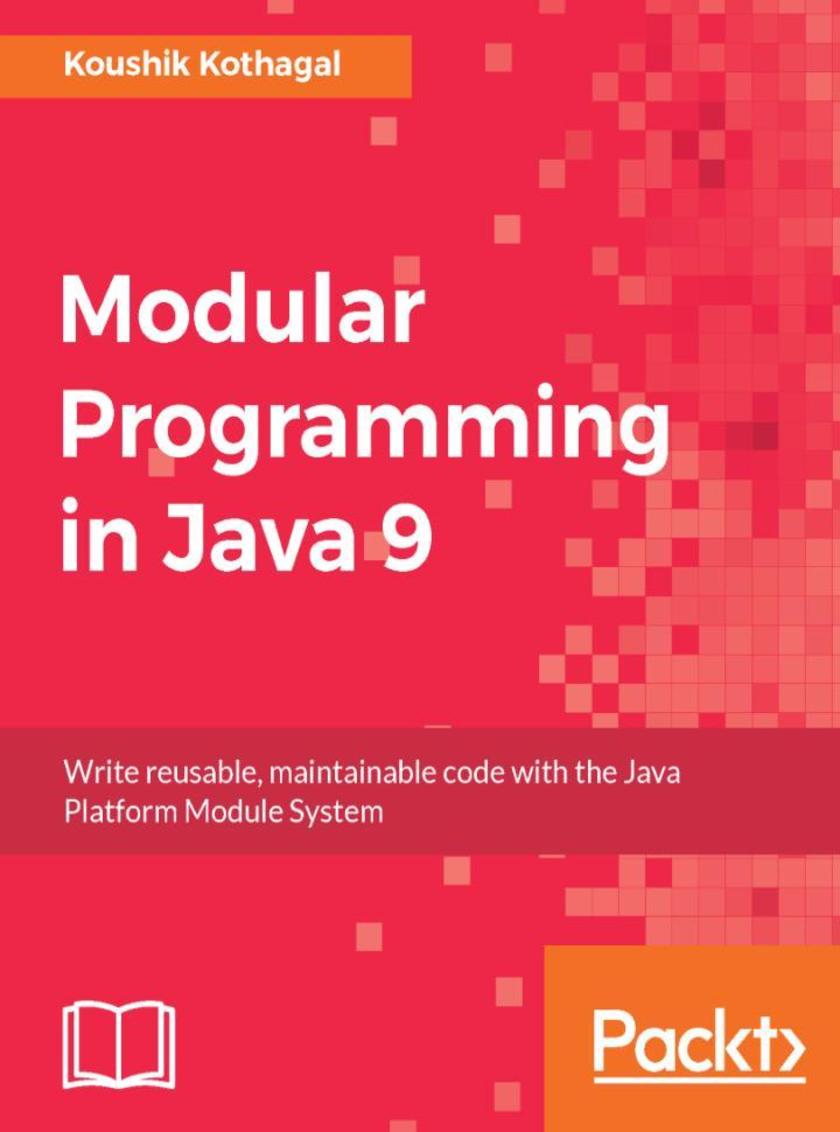
Modular Programming in Java 9
¥63.21
Kick-start your modular programming journey and gear up for the future of Java development About This Book ? Master design patterns and best practices to build truly modular applications in Java 9 ? Upgrade your old Java code to Java 9 with ease ? Build and run a smooth functioning multi-module application. Who This Book Is For This book is written for Java developers who are interested in learning and understanding the techniques and best practices to build modular applications in Java. The book assumes some previous programming experience in Java 8 or earlier, familiarity with the basic Java types such as classes and interfaces, as well as experience in compiling and executing Java programs. What You Will Learn ? Get introduced to the concept of modules and modular programming by working on a fully modular Java application ? Build and configure your own Java 9 modules ? Work with multiple modules and establish inter-module dependencies ? Understand and use the principles of encapsulation, readability, and accessibility ? Use jlink to generate fully loaded custom runtime images like a pro ? Discover the best practices to help you write awesome modules that are a joy to use and maintain ? Upgrade your old Java code to use the new Java 9 module system In Detail The Java 9 module system is an important addition to the language that affects the way we design, write, and organize code and libraries in Java. It provides a new way to achieve maintainable code by the encapsulation of Java types, as well as a way to write better libraries that have clear interfaces. Effectively using the module system requires an understanding of how modules work and what the best practices of creating modules are. This book will give you step-by-step instructions to create new modules as well as migrate code from earlier versions of Java to the Java 9 module system. You'll be working on a fully modular sample application and add features to it as you learn about Java modules. You'll learn how to create module definitions, setup inter-module dependencies, and use the built-in modules from the modular JDK. You will also learn about module resolution and how to use jlink to generate custom runtime images. We will end our journey by taking a look at the road ahead. You will learn some powerful best practices that will help you as you start building modular applications. You will also learn how to upgrade an existing Java 8 codebase to Java 9, handle issues with libraries, and how to test Java 9 applications. Style and Approach The book is a step-by-step guide to understanding Modularity and building a complete application using a modular design.
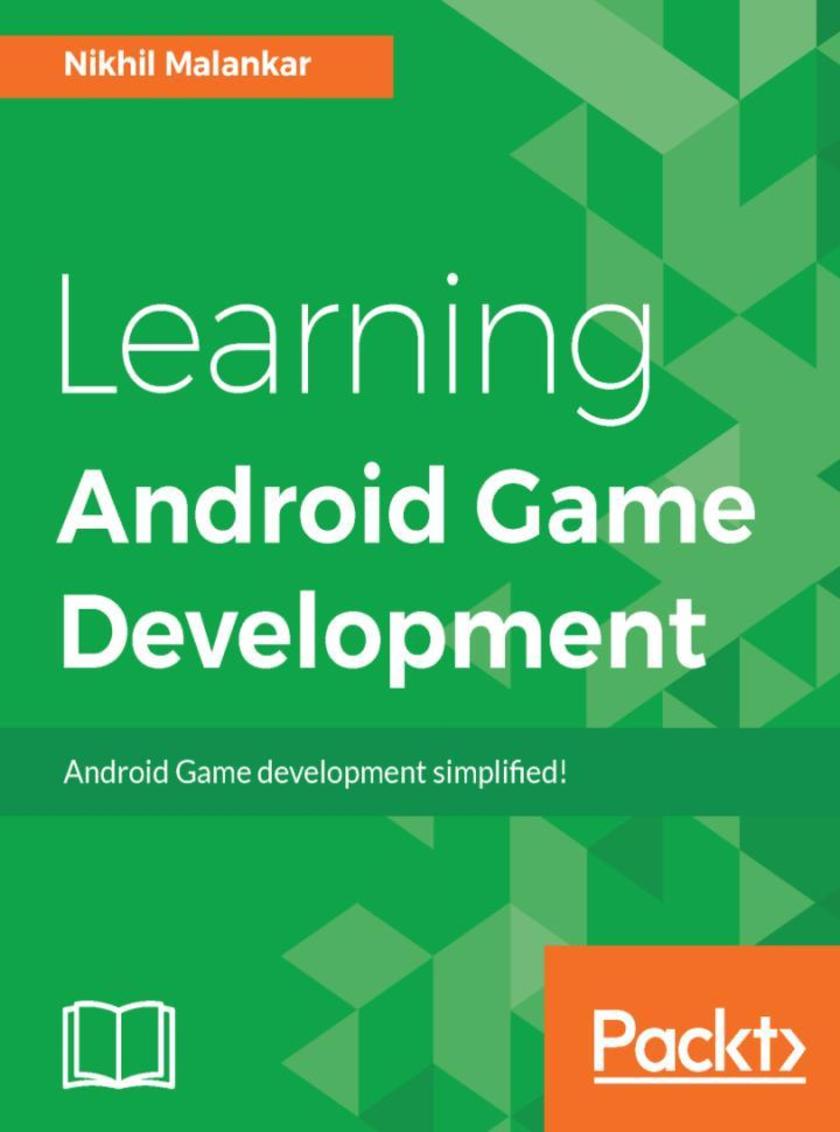
Learning Android Game Development
¥63.21
Learn the art of making Android games and turn your game development dreams into reality About This Book ? Leverage the latest features of Android N to create real-world 2D games ? Architect a 2D game from scratch and level up your Android game development skill ? Transition from developing simple 2D games to 3D games using basic Java code Who This Book Is For If you are a mobile developer who has basic Java programming knowledge, then this book is ideal for you. Previous Android development experience is not needed; however, basic mobile development knowledge is essential. What You Will Learn ? Understand the nuts and bolts of developing highly interactive and interesting games for Android N ? Link the interface to the code used in games through simple methods ? Interact with the images on the screen and also learn to animate them ? Set and save the game state and save high scores, hit points, and so on for your games ? Get a grasp of various collision techniques and implement the bounding box technique ? Convert your 2D games to 3D games using Android N ? Get an understanding of the process of UI creation using Android Studio In Detail In this book, we’ll start with installing Android studio and its components, and setting it up ready for Android N. We teach you how to take inputs from users, create images and interact with them, and work with sprites to create animations. You’ll then explore the various collision detection methods and use sprites to create an explosion. Moving on, you’ll go through the process of UI creation and see how to create buttons as well as display the score and other parameters on screen. By the end of the book, you will have a working example and an understanding of a 2D platform game like Super Mario and know how to convert your 2D games to 3D games. Style and approach This easy-to-understand guide follows a step-by-step approach to building games, and contains plenty of graphical examples for you to follow and grasp quickly, giving you the chance to implement the concepts practically.
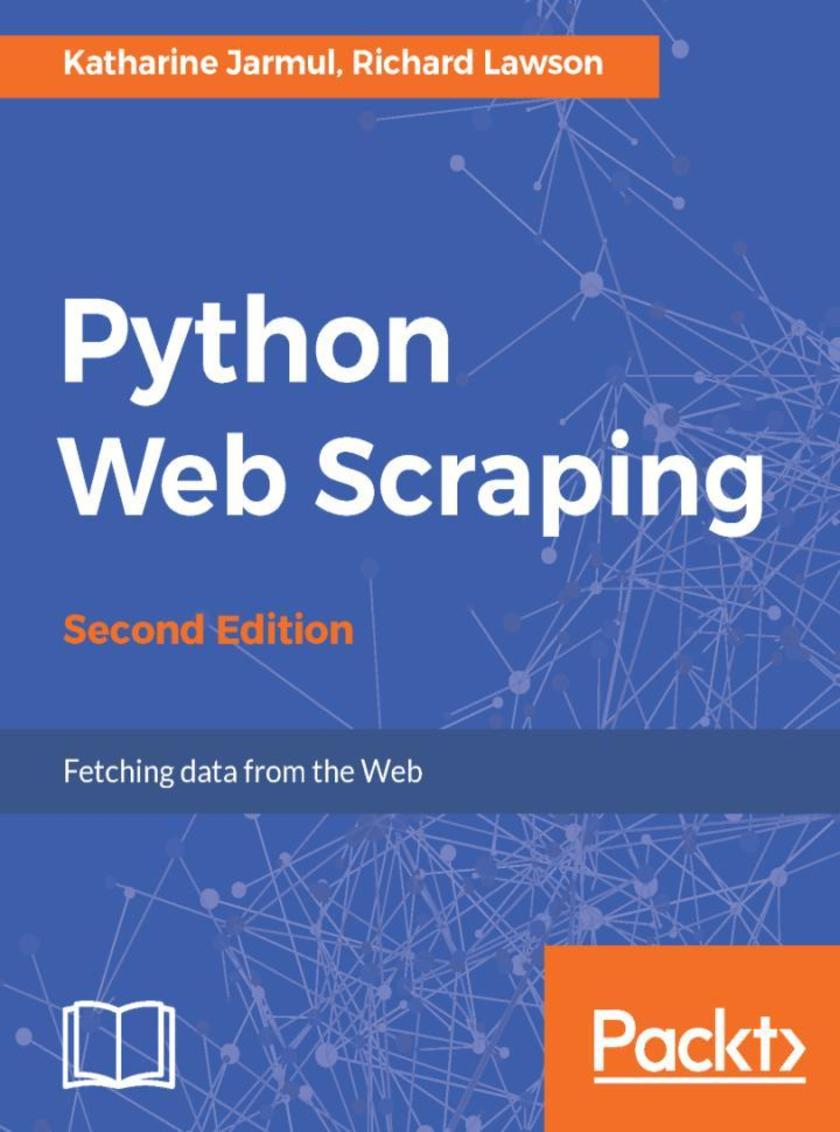
Python Web Scraping - Second Edition
¥63.21
Successfully scrape data from any website with the power of Python 3.x About This Book ? A hands-on guide to web scraping using Python with solutions to real-world problems ? Create a number of different web scrapers in Python to extract information ? This book includes practical examples on using the popular and well-maintained libraries in Python for your web scraping needs Who This Book Is For This book is aimed at developers who want to use web scraping for legitimate purposes. Prior programming experience with Python would be useful but not essential. Anyone with general knowledge of programming languages should be able to pick up the book and understand the principals involved. What You Will Learn ? Extract data from web pages with simple Python programming ? Build a concurrent crawler to process web pages in parallel ? Follow links to crawl a website ? Extract features from the HTML ? Cache downloaded HTML for reuse ? Compare concurrent models to determine the fastest crawler ? Find out how to parse JavaScript-dependent websites ? Interact with forms and sessions In Detail The Internet contains the most useful set of data ever assembled, most of which is publicly accessible for free. However, this data is not easily usable. It is embedded within the structure and style of websites and needs to be carefully extracted. Web scraping is becoming increasingly useful as a means to gather and make sense of the wealth of information available online. This book is the ultimate guide to using the latest features of Python 3.x to scrape data from websites. In the early chapters, you’ll see how to extract data from static web pages. You’ll learn to use caching with databases and files to save time and manage the load on servers. After covering the basics, you’ll get hands-on practice building a more sophisticated crawler using browsers, crawlers, and concurrent scrapers. You’ll determine when and how to scrape data from a JavaScript-dependent website using PyQt and Selenium. You’ll get a better understanding of how to submit forms on complex websites protected by CAPTCHA. You’ll find out how to automate these actions with Python packages such as mechanize. You’ll also learn how to create class-based scrapers with Scrapy libraries and implement your learning on real websites. By the end of the book, you will have explored testing websites with scrapers, remote scraping, best practices, working with images, and many other relevant topics. Style and approach This hands-on guide is full of real-life examples and solutions starting simple and then progressively becoming more complex. Each chapter in this book introduces a problem and then provides one or more possible solutions.
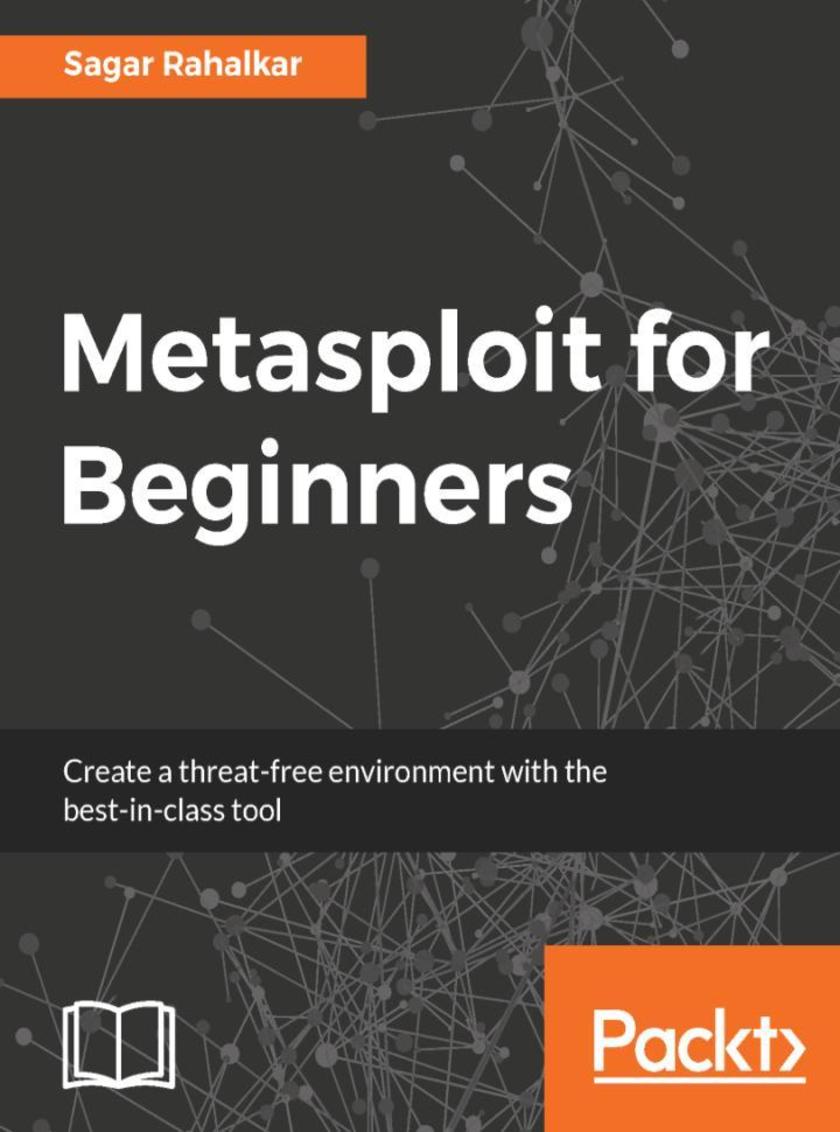
Metasploit for Beginners
¥63.21
An easy to digest practical guide to Metasploit covering all aspects of the framework from installation, configuration, and vulnerability hunting to advanced client side attacks and anti-forensics. About This Book ? Carry out penetration testing in highly-secured environments with Metasploit ? Learn to bypass different defenses to gain access into different systems. ? A step-by-step guide that will quickly enhance your penetration testing skills. Who This Book Is For If you are a penetration tester, ethical hacker, or security consultant who wants to quickly learn the Metasploit framework to carry out elementary penetration testing in highly secured environments then, this book is for you. What You Will Learn ? Get to know the absolute basics of the Metasploit framework so you have a strong foundation for advanced attacks ? Integrate and use various supporting tools to make Metasploit even more powerful and precise ? Set up the Metasploit environment along with your own virtual testing lab ? Use Metasploit for information gathering and enumeration before planning the blueprint for the attack on the target system ? Get your hands dirty by firing up Metasploit in your own virtual lab and hunt down real vulnerabilities ? Discover the clever features of the Metasploit framework for launching sophisticated and deceptive client-side attacks that bypass the perimeter security ? Leverage Metasploit capabilities to perform Web application security scanning In Detail This book will begin by introducing you to Metasploit and its functionality. Next, you will learn how to set up and configure Metasploit on various platforms to create a virtual test environment. You will also get your hands on various tools and components used by Metasploit. Further on in the book, you will learn how to find weaknesses in the target system and hunt for vulnerabilities using Metasploit and its supporting tools. Next, you'll get hands-on experience carrying out client-side attacks. Moving on, you'll learn about web application security scanning and bypassing anti-virus and clearing traces on the target system post compromise. This book will also keep you updated with the latest security techniques and methods that can be directly applied to scan, test, hack, and secure networks and systems with Metasploit. By the end of this book, you'll get the hang of bypassing different defenses, after which you'll learn how hackers use the network to gain access into different systems. Style and approach This tutorial is packed with step-by-step instructions that are useful for those getting started with Metasploit. This is an easy-to-read guide to learning Metasploit from scratch that explains simply and clearly all you need to know to use this essential IT power tool.
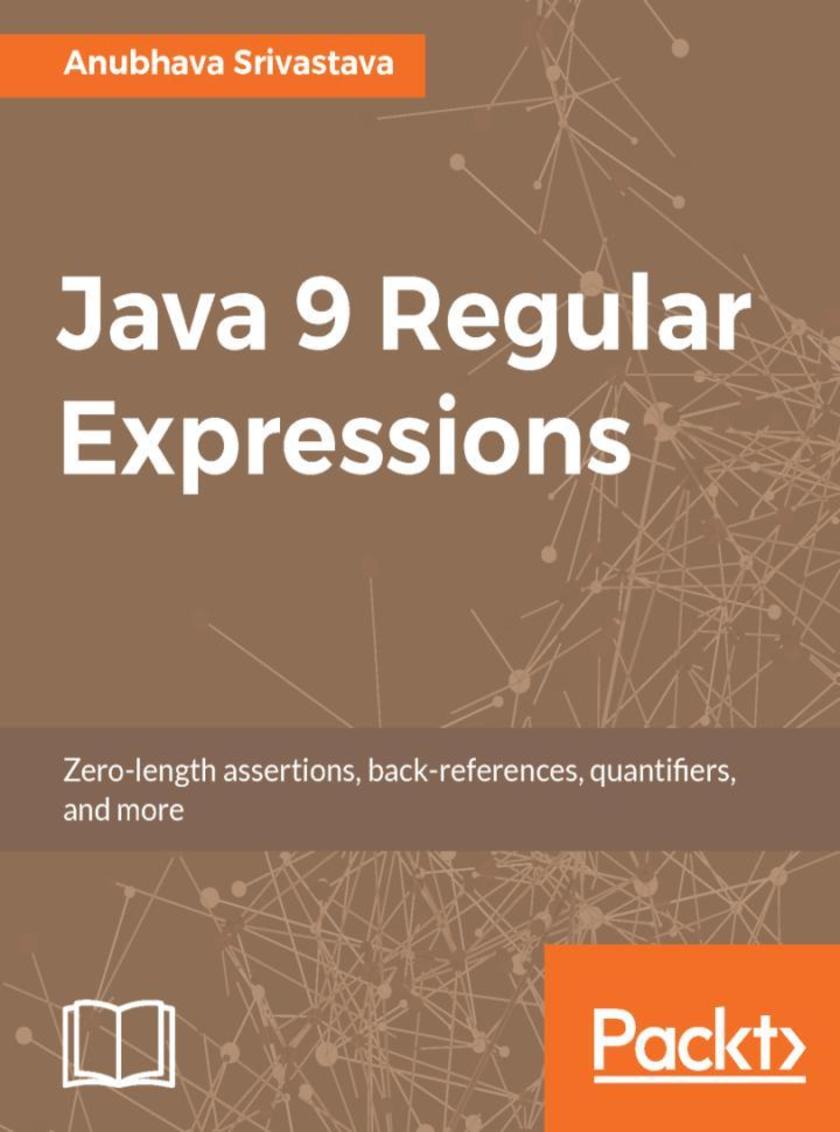
Java 9 Regular Expressions
¥63.21
Solve real world problems using Regex in Java. About This Book ? Discover regular expressions and how they work ? Implement regular expressions with Java to your code base ? Learn to use regular expressions in emails, URLs, paths, and IP addresses Who This Book Is For This book is for Java developers who would like to understand and use regular expressions. A basic knowledge of Java is assumed. What You Will Learn ? Understand the semantics, rules, and core concepts of writing Java code involving regular expressions ? Learn about the java.util.Regex package using the Pattern class, Matcher class, code snippets, and more ? Match and capture text in regex and use back-references to the captured groups ? Explore Regex using Java String methods and regex capabilities in the Java Scanner API ? Use zero-width assertions and lookarounds in regex ? Test and optimize a poorly performing regex and various other performance tips In Detail Regular expressions are a powerful tool in the programmer's toolbox and allow pattern matching. They are also used for manipulating text and data. This book will provide you with the know-how (and practical examples) to solve real-world problems using regex in Java. You will begin by discovering what regular expressions are and how they work with Java. This easy-to-follow guide is a great place from which to familiarize yourself with the core concepts of regular expressions and to master its implementation with the features of Java 9. You will learn how to match, extract, and transform text by matching specific words, characters, and patterns. You will learn when and where to apply the methods for finding patterns in digits, letters, Unicode characters, and string literals. Going forward, you will learn to use zero-length assertions and lookarounds, parsing the source code, and processing the log files. Finally, you will master tips, tricks, and best practices in regex with Java. Style and approach This book will take readers through this learning journey using simple, easy-to-understand, step-by-step instructions and hands-on examples at every stage.
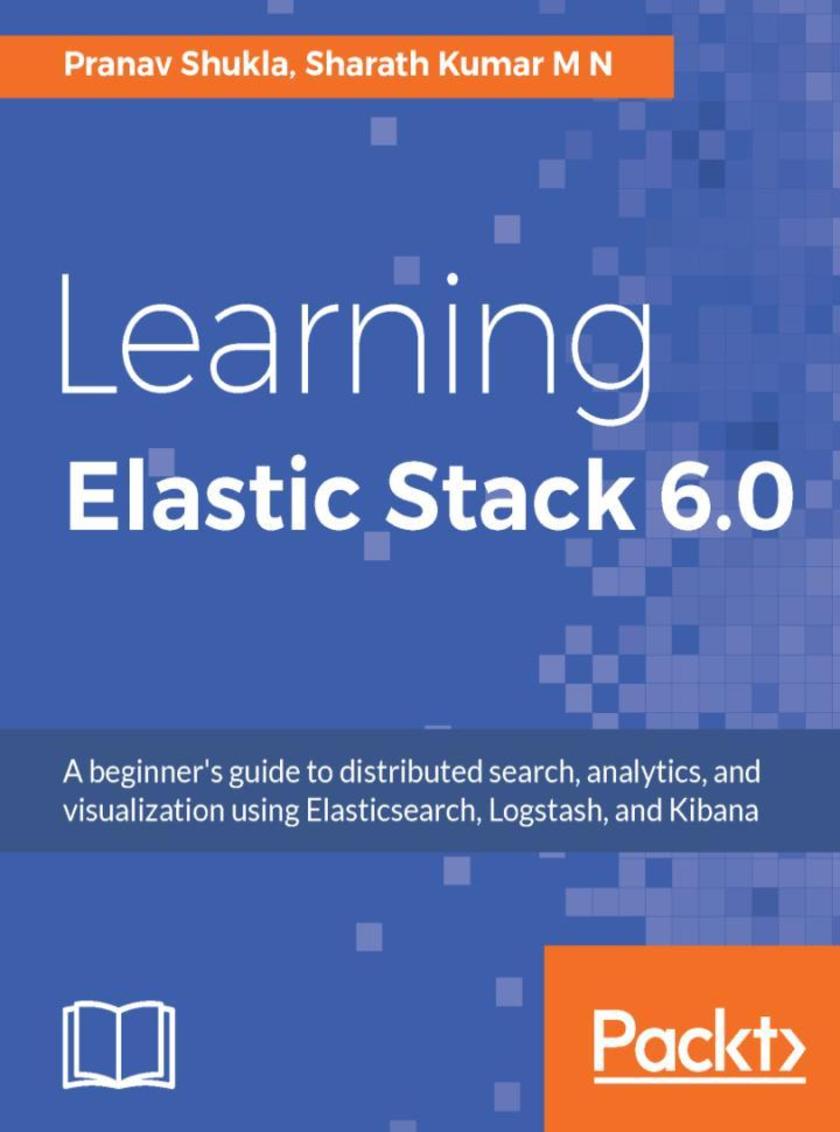
Learning Elastic Stack 6.0
¥63.21
Deliver end-to-end real-time distributed data processing solutions by leveraging the power of Elastic Stack 6.0 About This Book ? Get to grips with the new features introduced in Elastic Stack 6.0 ? Get valuable insights from your data by working with the different components of the Elastic stack such as Elasticsearch, Logstash, Kibana, X-Pack, and Beats ? Includes handy tips and techniques to build, deploy and manage your Elastic applications efficiently on-premise or on the cloud Who This Book Is For This book is for data professionals who want to get amazing insights and business metrics from their data sources. If you want to get a fundamental understanding of the Elastic Stack for distributed, real-time processing of data, this book will help you. A fundamental knowledge of JSON would be useful, but is not mandatory. No previous experience with the Elastic Stack is required. What You Will Learn ? Familiarize yourself with the different components of the Elastic Stack ? Get to know the new functionalities introduced in Elastic Stack 6.0 ? Effectively build your data pipeline to get data from terabytes or petabytes of data into Elasticsearch and Logstash for searching and logging ? Use Kibana to visualize data and tell data stories in real-time ? Secure, monitor, and use the alerting and reporting capabilities of Elastic Stack ? Take your Elastic application to an on-premise or cloud-based production environment In Detail The Elastic Stack is a powerful combination of tools for distributed search, analytics, logging, and visualization of data from medium to massive data sets. The newly released Elastic Stack 6.0 brings new features and capabilities that empower users to find unique, actionable insights through these techniques. This book will give you a fundamental understanding of what the stack is all about, and how to use it efficiently to build powerful real-time data processing applications. After a quick overview of the newly introduced features in Elastic Stack 6.0, you’ll learn how to set up the stack by installing the tools, and see their basic configurations. Then it shows you how to use Elasticsearch for distributed searching and analytics, along with Logstash for logging, and Kibana for data visualization. It also demonstrates the creation of custom plugins using Kibana and Beats. You’ll find out about Elastic X-Pack, a useful extension for effective security and monitoring. We also provide useful tips on how to use the Elastic Cloud and deploy the Elastic Stack in production environments. On completing this book, you’ll have a solid foundational knowledge of the basic Elastic Stack functionalities. You’ll also have a good understanding of the role of each component in the stack to solve different data processing problems. Style and approach This step-by-step guide will show you the Elastic Stack, covering all the components through interactive and easy-to-follow examples. It also includes handy tips.
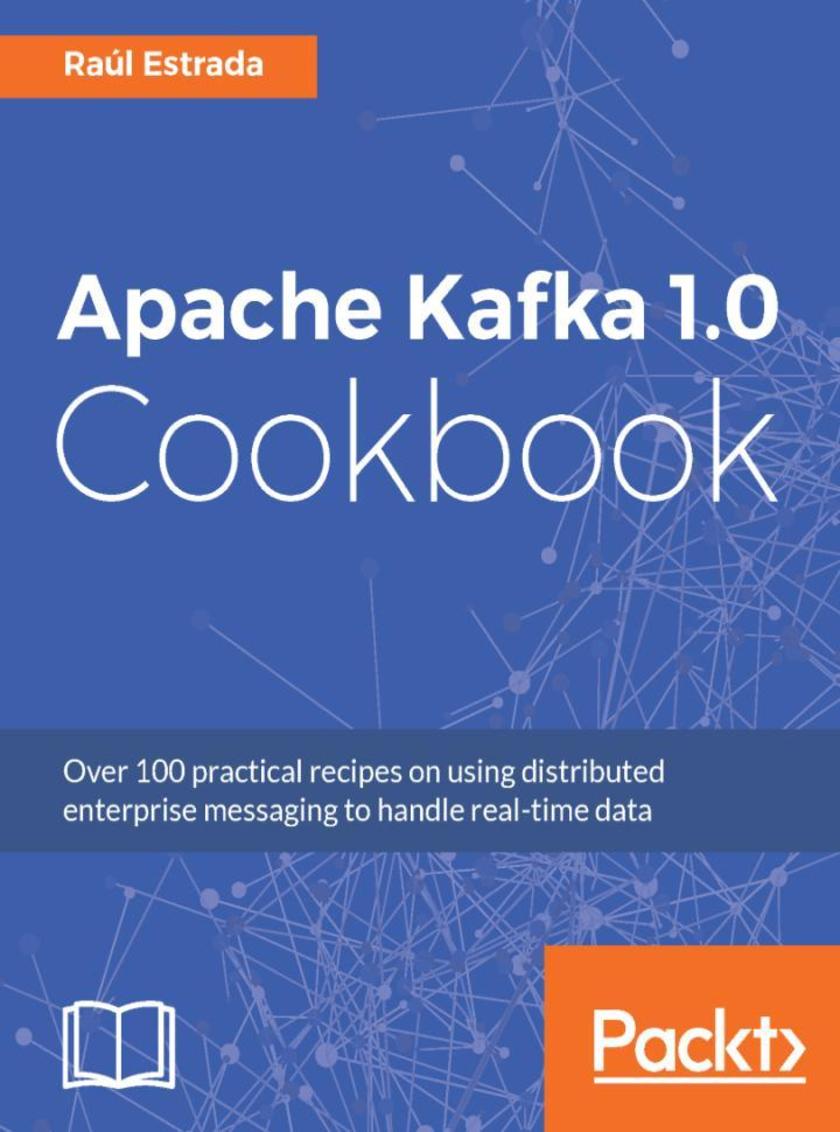
Apache Kafka 1.0 Cookbook
¥63.21
Simplify real-time data processing by leveraging the power of Apache Kafka 1.0 About This Book ? Use Kafka 1.0 features such as Confluent platforms and Kafka streams to build efficient streaming data applications to handle and process your data ? Integrate Kafka with other Big Data tools such as Apache Hadoop, Apache Spark, and more ? Hands-on recipes to help you design, operate, maintain, and secure your Apache Kafka cluster with ease Who This Book Is For This book is for developers and Kafka administrators who are looking for quick, practical solutions to problems encountered while operating, managing or monitoring Apache Kafka. If you are a developer, some knowledge of Scala or Java will help, while for administrators, some working knowledge of Kafka will be useful. What You Will Learn ? Install and configure Apache Kafka 1.0 to get optimal performance ? Create and configure Kafka Producers and Consumers ? Operate your Kafka clusters efficiently by implementing the mirroring technique ? Work with the new Confluent platform and Kafka streams, and achieve high availability with Kafka ? Monitor Kafka using tools such as Graphite and Ganglia ? Integrate Kafka with third-party tools such as Elasticsearch, Logstash, Apache Hadoop, Apache Spark, and more In Detail Apache Kafka provides a unified, high-throughput, low-latency platform to handle real-time data feeds. This book will show you how to use Kafka efficiently, and contains practical solutions to the common problems that developers and administrators usually face while working with it. This practical guide contains easy-to-follow recipes to help you set up, configure, and use Apache Kafka in the best possible manner. You will use Apache Kafka Consumers and Producers to build effective real-time streaming applications. The book covers the recently released Kafka version 1.0, the Confluent Platform and Kafka Streams. The programming aspect covered in the book will teach you how to perform important tasks such as message validation, enrichment and composition.Recipes focusing on optimizing the performance of your Kafka cluster, and integrate Kafka with a variety of third-party tools such as Apache Hadoop, Apache Spark, and Elasticsearch will help ease your day to day collaboration with Kafka greatly. Finally, we cover tasks related to monitoring and securing your Apache Kafka cluster using tools such as Ganglia and Graphite. If you're looking to become the go-to person in your organization when it comes to working with Apache Kafka, this book is the only resource you need to have. Style and approach Following a cookbook recipe-based approach, we’ll teach you how to solve everyday difficulties and struggles you encounter using Kafka through hands-on examples.
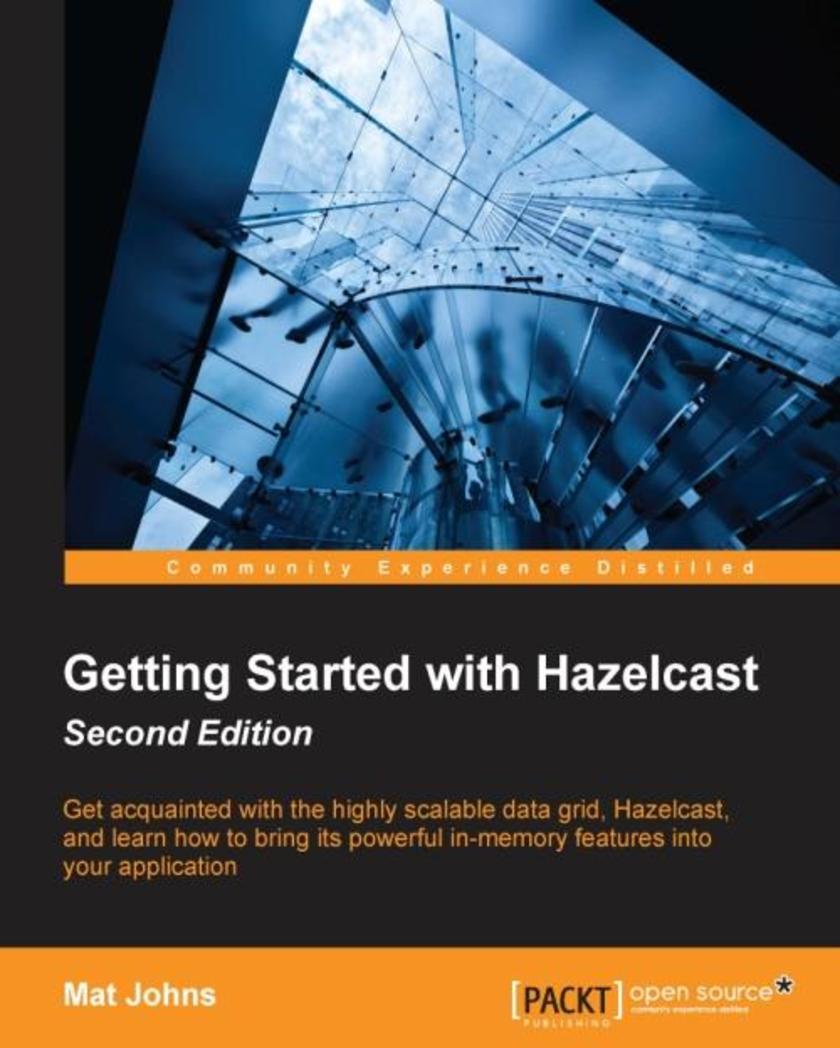
Getting Started with Hazelcast - Second Edition
¥63.21
This book is a great introduction for Java developers, software architects, or DevOps looking to enable scalable and agile data within their applications. Providing in-memory object storage, cluster-wide state and messaging, or even scalable task execution, Hazelcast helps solve a number of issues that have troubled technologists for years.
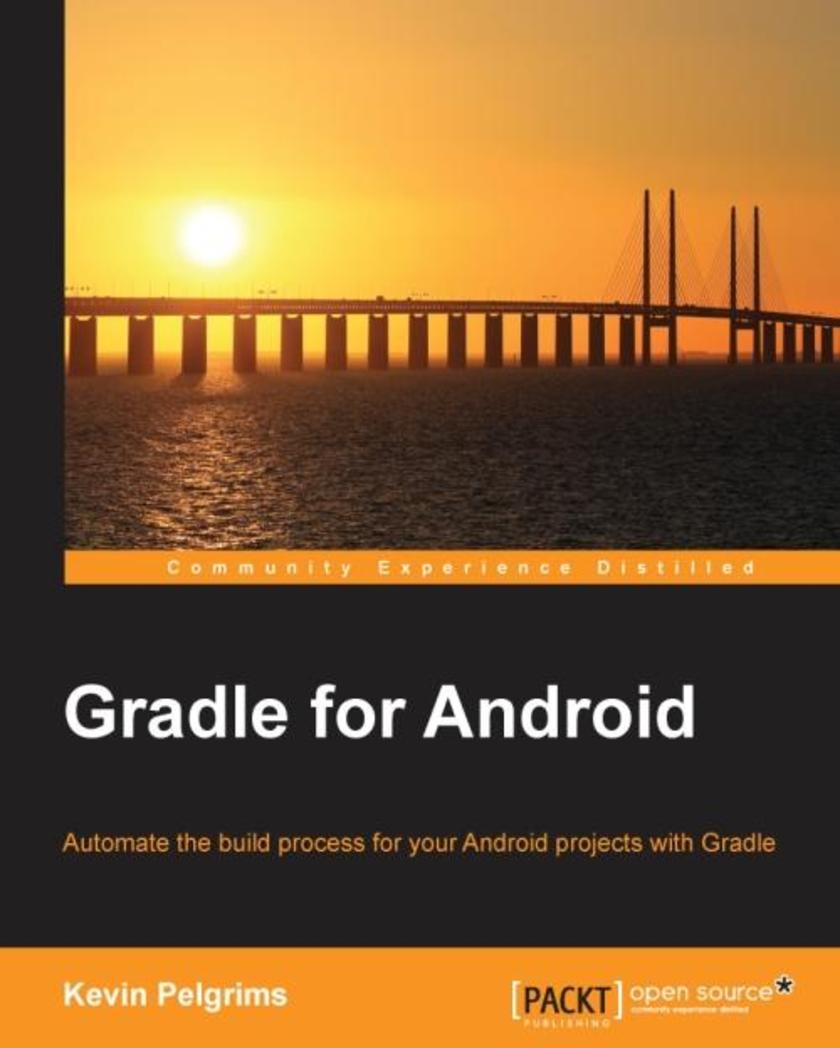
Gradle for Android
¥63.21
If you are an experienced Android developer wanting to enhance your skills with the Gradle Android build system, then this book is for you. As a prerequisite, you will need some knowledge of the concepts of Android application development.
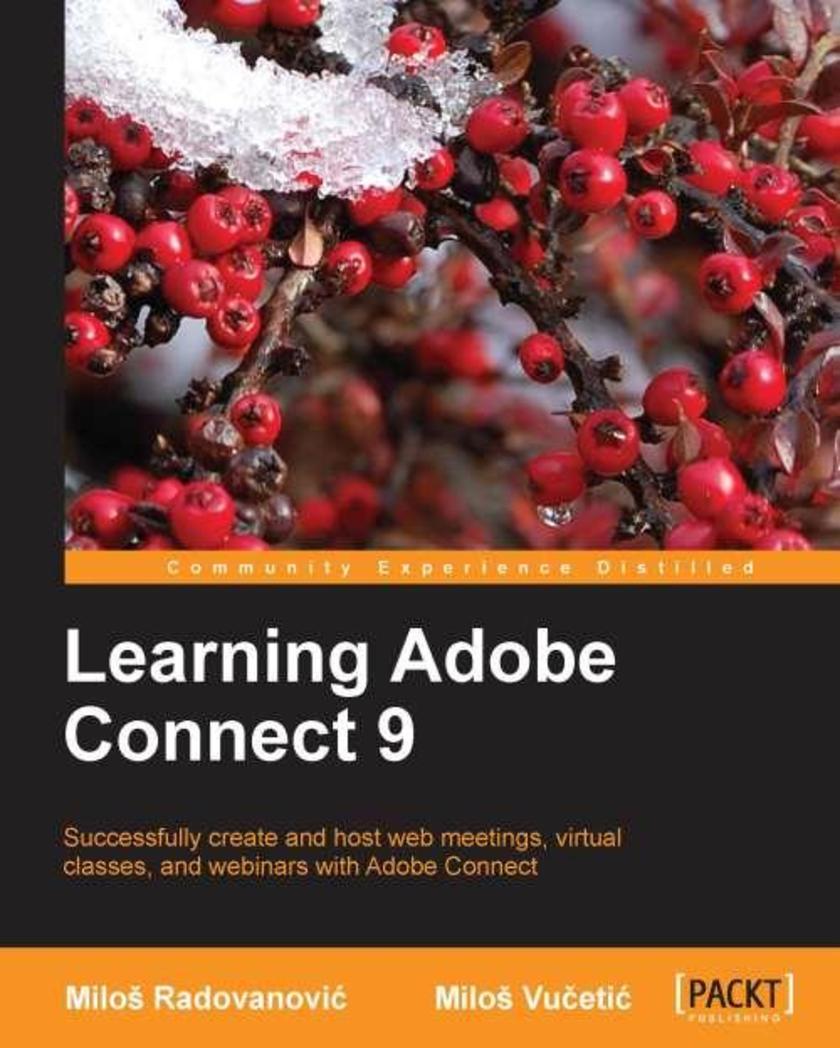
Learning Adobe Connect 9
¥63.21
Written in an engaging, easy-to-follow style, Learning Adobe Connect 9 is a practical guide that will help you master the use of this web conferencing platform and its most important features. This book is ideal for users who would like to start utilizing Adobe Connect for web meetings, e-learning, and webinars. Those who are looking to learn Connect and get up to speed with using all of its features would find this book extremely useful.
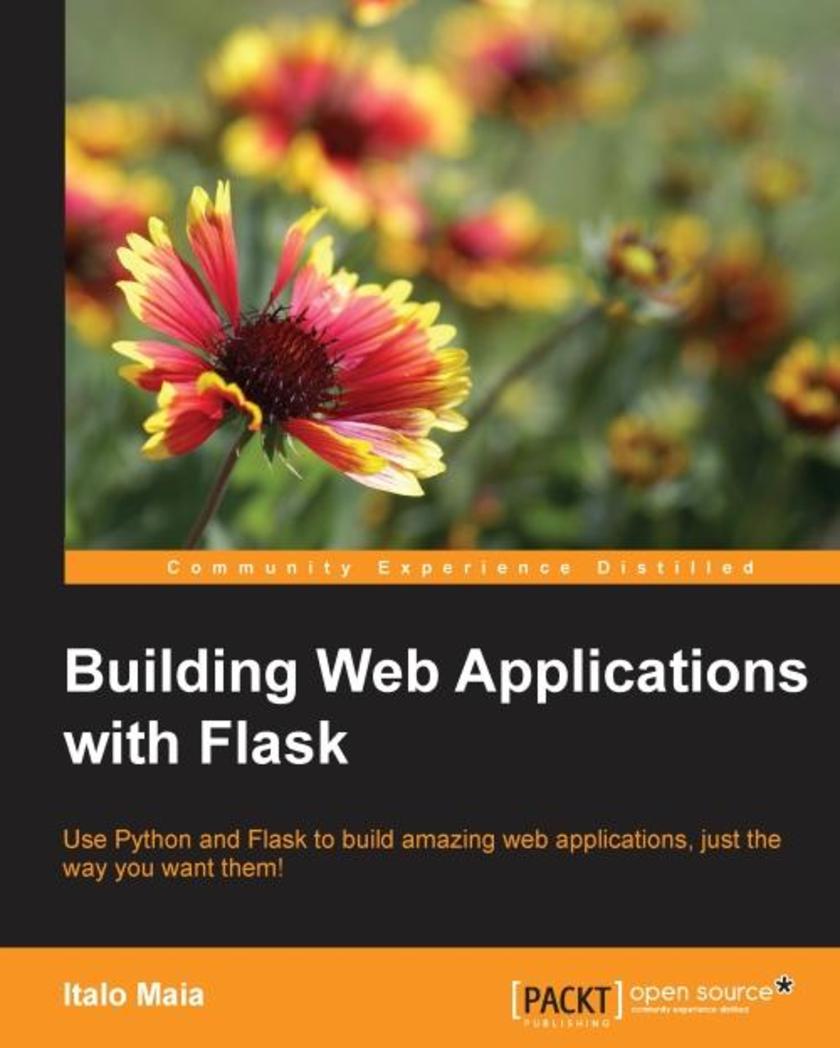
Building Web Applications with Flask
¥63.21
If you are a Python web developer who wants to learn more about developing applications in Flask and scaling them with industry-standard practices, this is the book for you.
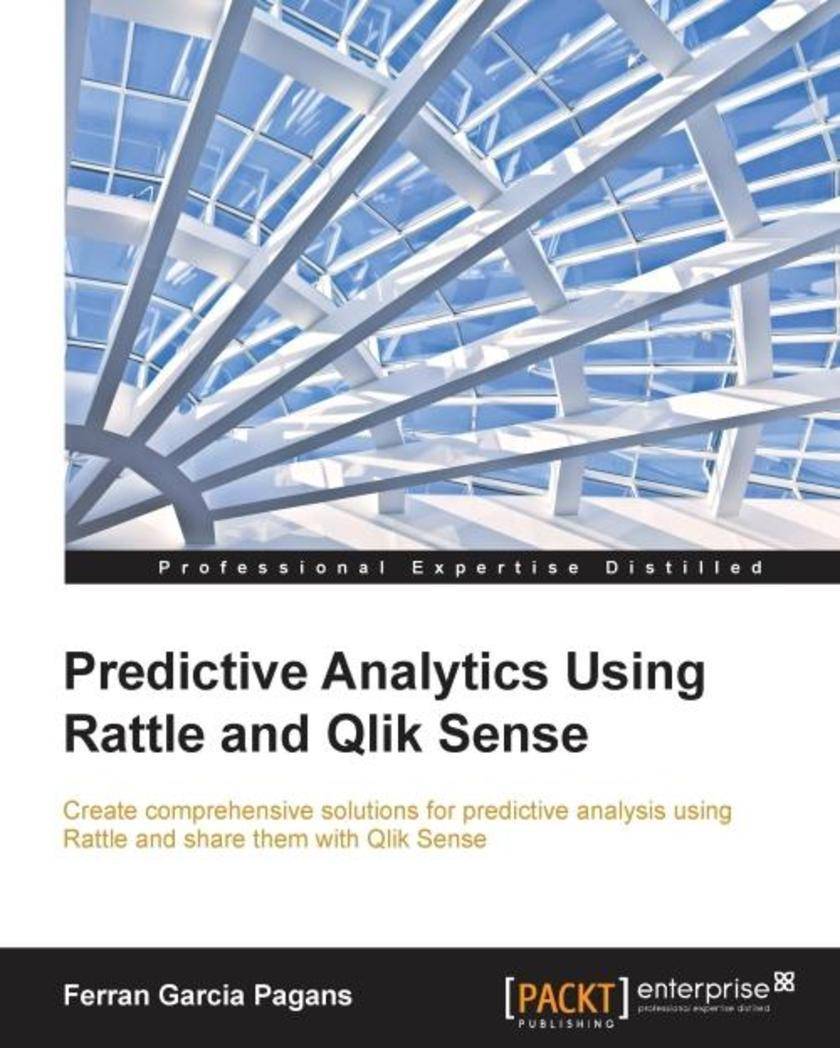
Predictive Analytics Using Rattle and Qlik Sense
¥63.21
If you are a business analyst who wants to understand how to improve your data analysis and how to apply predictive analytics, then this book is ideal for you. This book assumes you have some basic knowledge of statistics and a spreadsheet editor such as Excel, but knowledge of QlikView is not required.
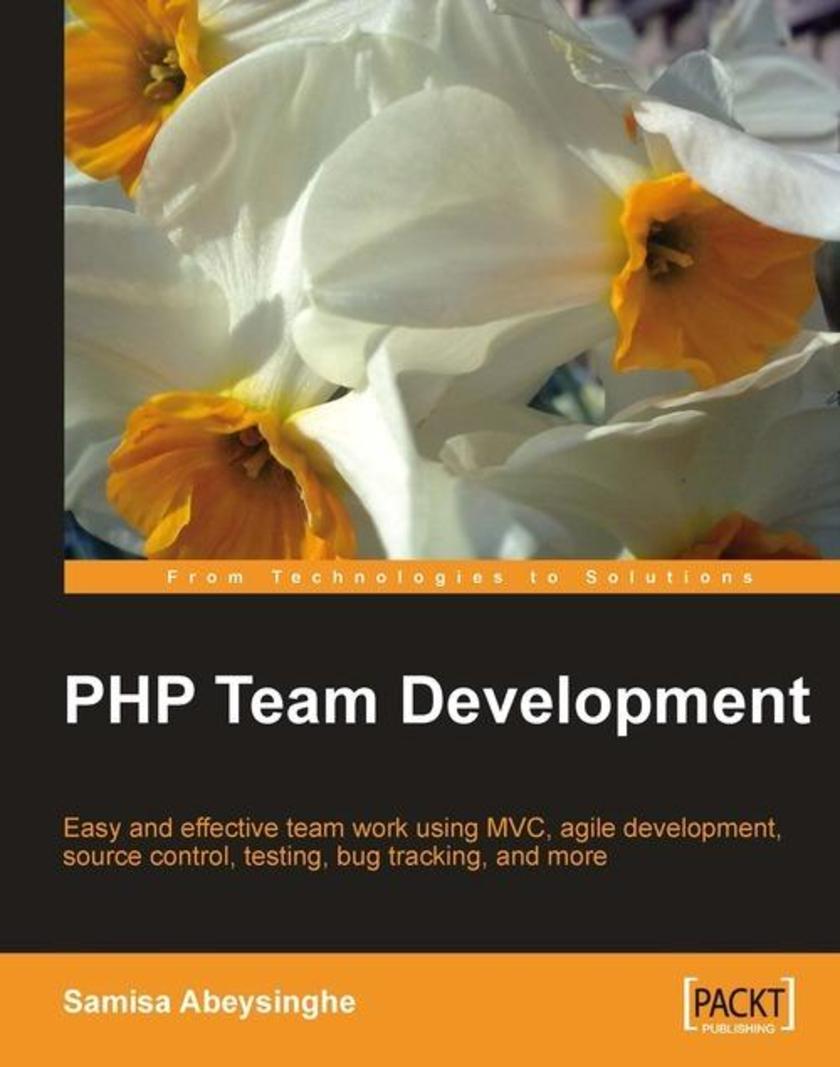
PHP Team Development
¥63.21
This book looks into PHP projects mainly from an enterprise view. The author's experience enables him to give you an overall picture of PHP projects and discuss factors that contribute to project success in a clear and precise manner. Each chapter focuses specifically on how the techniques covered will make team work easier. Examples (rather than abstract best practices) are used to illustrate the practical benefits. This book is for PHP developers who work in teams on complex PHP projects. With this book in hand, it is easy to discover the secrets of successful PHP projects that meet today's complex enterprise demands. This book can also be useful for project managers who are looking to be successful with PHP projects. Those who are stakeholders in PHP projects, such as clients, or those who want to sponsor PHP projects, can also learn what to expect and how to deal with a PHP project team with this book.




 购物车
购物车 个人中心
个人中心



